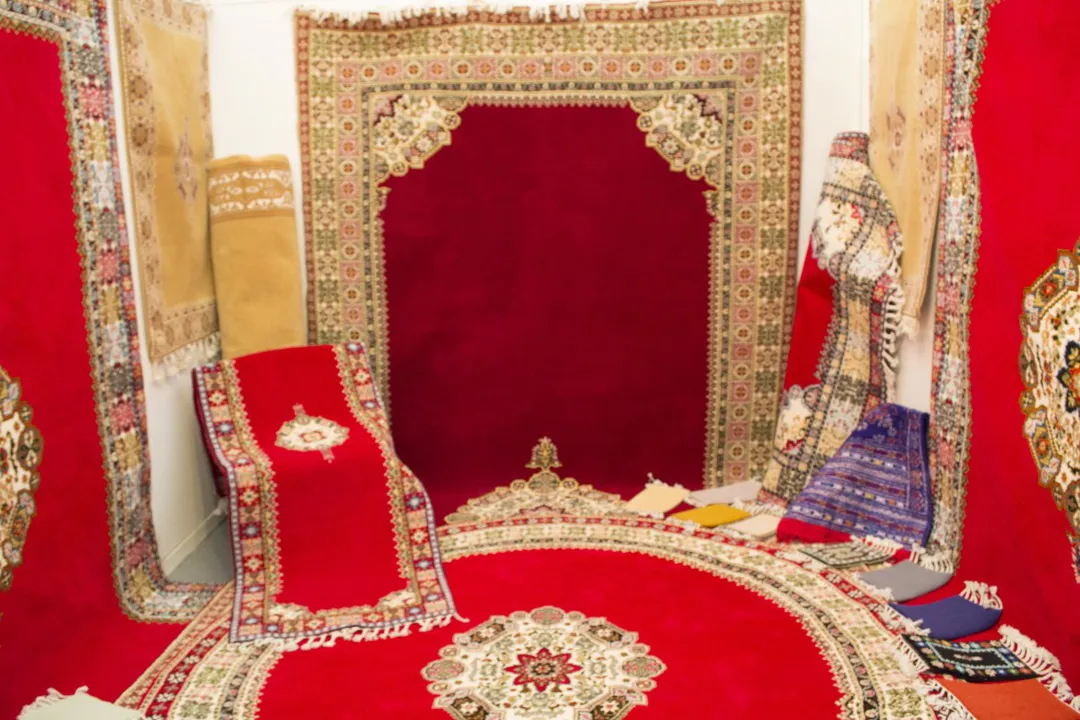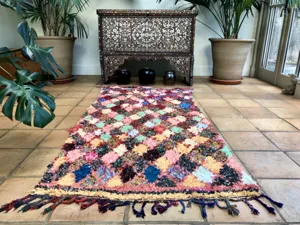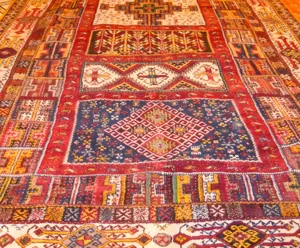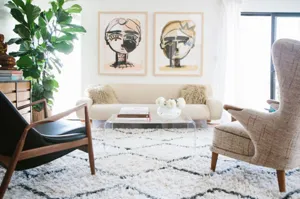Do you know about the history of the Rabati carpet? This exquisite carpet has been around for centuries and is a significant part of Rabat's cultural heritage.
The Rbati Carpet: A Heritage of the City of Rabat
Nowadays, the production of Rbati carpets is a crucial industry in Rabat, providing a source of income for many local artisans.
Despite its uncertain origins, the Rbati carpet represents the skill and artistic traditions of the people of Rabat.
Its origins are still a matter of debate. Yet, experts have observed that the carpet's designs and patterns resemble those found in the Andalusian region of Spain. Others believe that it has ties to Berber culture. They claim that it shares several characteristics with other Berber carpets.
The Magnificent Red Rbati Rug: Perfect for Moroccan Living Rooms

Rbati Rug In Moroccan Living Rooms
The red Rbati carpet is more than just a beautiful accessory for your living room. It also holds immense cultural and historical importance.
The carpet's intricate designs have traditional Moroccan patterns. Geometric shapes, floral motifs, and calligraphy, make the Rabati rug an image of the country's artistic heritage.
Not only is the Rbati carpet pleasing, but it is also a highly practical choice. It is made from high-quality wool using age-old techniques, making it durable and long-lasting.
What's more, it's easy to clean, which means that it can withstand heavy usage while retaining its beauty over time.
Each carpet is handcrafted by skilled artisans, a process that can take several months to complete. This not only increases the value of the carpet but also supports local communities and preserves Morocco's traditional art forms.
The Making of Rabat Rugs: A Detailed Process
Have you ever heard of a Rabat rug? It's a beautiful piece of artwork made by talented Moroccan women. They use a knotted point technique to create each rug by hand.
The skilled artisans use high-warp looms. Sometimes two or three workers work together on the same loom to create larger rugs.
While making these rugs, even the smallest mistake can change the final result. So the women need to concentrate and pay close attention to every detail. They follow a model on grid paper or memorize the designs.
The wool used to create Rabati rugs comes from Morocco, France, Australia, etc ...
Once the rug is finished, it undergoes a quality evaluation. The manager checks the tightness of the stitches and the beauty of the design.
The tighter the stitch, the more durable, beautiful, and expensive the rug. It makes it a true work of art that will last for many years.
Related posts
© 2022 Marrakech Tricks. All rights reserved | Design by Marrakech Web Design







